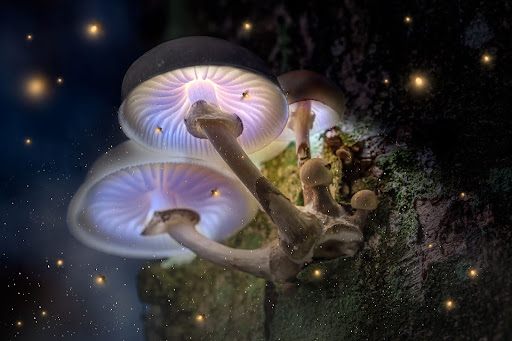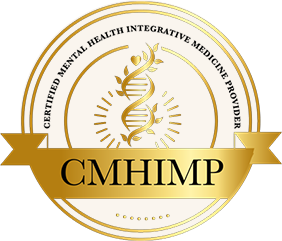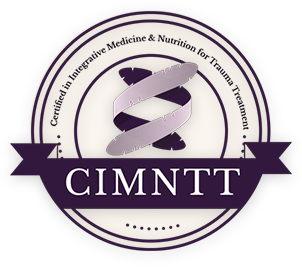Certificación
Exploring the Microbiota-Gut-Brain Axis in Psychedelic Research
A growing body of research is unveiling the complex interplay between psychedelics and the gut-brain axis, suggesting that their therapeutic effects may extend beyond the brain to involve the gut microbiome. Studies are beginning to map how substances like psilocybin and other tryptamines influence gut microbial composition, serotonin production, and neuroinflammatory processes.

The desire to explore consciousness may be one of humanity’s oldest instincts, rooted in our relationship with the natural world and its mind-altering gifts. Whether to treat pain, journey through grief, or seek the divine, the use of psychoactive plants and mushrooms spans cultures and centuries. Among many Indigenous and traditional societies, these spirit molecules are not used casually, but within the structure of ritual, healing, and community. They are allies in the search for balance and transformation.
Modern societies have often approached these plant medicines with skepticism, suppressing or pathologizing them through legal, religious, or scientific institutions. Still, many Indigenous communities preserve their sacred knowledge and continue to work with these medicines in traditional ways. As biomedical research slowly catches up, we’re beginning to remember what those communities have always known: these substances carry deep healing potential.
Today, as psychedelic medicine is increasingly explored for trauma, depression, and PTSD, researchers are beginning to understand that these compounds may not act solely on the brain. Emerging evidence points to the microbiota-gut-brain axis as a powerful mediator of their effects, and this research offers not just a new treatment path but a deeper way to understand the interconnectedness of mind, body, and spirit.
This emerging field, where psychedelic science meets microbiome research, is exploring how the microbiota may modulate, mediate, or even magnify the mental health benefits of psychedelics. From preclinical trials in rats to theoretical frameworks on the “psilocybiome,” these findings point toward a new psychobiological frontier in understanding consciousness, emotional healing, and integrative treatment strategies.
Here are five recent studies exploring how psychedelics interact with the gut-brain axis and how this interaction may influence healing:
The first study presents evidence that the gut microbiota may not only respond to psychedelics but also modulate their effects. The authors suggest that the therapeutic power of these compounds could be shaped by microbial metabolism and that personalized psychedelic therapy might one day take a person’s gut composition into account.
The second study expands this idea by framing the gut microbiome as a convergence point for biofeedback systems throughout the body. They propose that the microbiota-gut-brain axis may shape the entire arc of a psychedelic journey. This work calls for a paradigm shift in psychedelic medicine—one that embraces complexity, context, and the role of peripheral systems alongside neuroplasticity and serotonin signaling.
The third study challenges the idea that psychedelics operate only through the psyche. Instead, the authors argue for a multi-system approach that includes glial cells, neuroendocrine function, epigenetics, and the gut-brain axis. They outline experimental models to explore new therapeutic possibilities—from neurodegenerative disease to traumatic brain injury—while advocating for deeper research into psychedelics’ systemic biological actions.
The fourth study turns attention to psilocybin’s effects on the body outside the brain. Serotonin receptors are densely expressed throughout the GI tract, and the authors raise the possibility that psilocybin’s mental health benefits may emerge, in part, from its action in the gut. This reflection reminds us that the healing we seek may begin not in the mind, but in the place we least expect: the gut.
The fifth study, an animal model, explored how psilocybin and norbaeocystin affect the microbiome. While diversity was unchanged, certain bacterial populations shifted depending on dose and timing. These preliminary findings suggest that tryptamines may influence microbial balance and, potentially, mood. They also open new questions about how even subtle shifts in gut flora might alter the outcomes of psychedelic treatment.
I address these applications to our clinical work in my courses and books.
Tags: psychedelics, psilocybin, gut-brain axis, microbiota, mental health, tryptamines, microbial metabolism, neuroinflammation, serotonin, psychobiotics, psychedelic therapy
Interested in Learning More?
- Course(s): PTSD, Complex Trauma, and Traumatic Brain Injury
- Course(s): Mental Health Disorders
- Book(s): Rhythms of Recovery
- Book(s): The Brainbow Blueprint
- Book(s): Natural Woman
Research Glossary
Research has its own vocabulary. To help you decipher research, I created a Glossary to ease the way. You may access it here: Research Glossary
Referenced Research Publications
Pharmacological research
September 2024
DOI: 10.1016/j.phrs.2024.107338
Mind over matter: the microbial mindscapes of psychedelics and the gut-brain axis
Abstract
Psychedelics have emerged as promising therapeutics for several psychiatric disorders. Hypotheses around their mechanisms have revolved around their partial agonism at the serotonin 2 A receptor, leading to enhanced neuroplasticity and brain connectivity changes that underlie positive mindset shifts. However, these accounts fail to recognise that the gut microbiota, acting via the gut-brain axis, may also have a role in mediating the positive effects of psychedelics on behaviour. In this review, we present existing evidence that the composition of the gut microbiota may be responsive to psychedelic drugs, and in turn, that the effect of psychedelics could be modulated by microbial metabolism. We discuss various alternative mechanistic models and emphasize the importance of incorporating hypotheses that address the contributions of the microbiome in future research. Awareness of the microbial contribution to psychedelic action has the potential to significantly shape clinical practice, for example, by allowing personalised psychedelic therapies based on the heterogeneity of the gut microbiota.
Keywords: 2; 3; 4-Methyl enedioxy methamphetamine (MDMA); 5-dimethoxy-4-iodoamphetamine (DOI); 5-methoxy-N; DMT; Dimethyltryptamine (DMT); Gut microbiota; Gut-brain axis; Ketamine; Lysergic acid diethylamide (LSD); N-dimethyltryptamine (5-MeO-DMT); Personalised medicine; Precision medicine; Psilocin; Psilocybin; Psychedelics; Serotonin; ayahuasca.
Copyright © 2024 The Authors. Published by Elsevier Ltd.. All rights reserved.
Reference
Caspani, G., Ruffell, S. G. D., Tsang, W., Netzband, N., Rohani-Shukla, C., Swann, J. R., & Jefferies, W. A. (2024). Mind over matter: the microbial mindscapes of psychedelics and the gut-brain axis. Pharmacological research, 207, 107338. https://doi.org/10.1016/j.phrs.2024.107338
International journal of clinical and health psychology : IJCHP
April - June 2023
DOI: 10.1016/j.ijchp.2022.100349
Seeking the Psilocybiome: Psychedelics meet the microbiota-gut-brain axis
Abstract
Moving towards a systems psychiatry paradigm embraces the inherent complex interactions across all levels from micro to macro and necessitates an integrated approach to treatment. Cortical 5-HT2A receptors are key primary targets for the effects of serotonergic psychedelics. However, the therapeutic mechanisms underlying psychedelic therapy are complex and traverse molecular, cellular, and network levels, under the influence of biofeedback signals from the periphery and the environment. At the interface between the individual and the environment, the gut microbiome, via the gut-brain axis, plays an important role in the unconscious parallel processing systems regulating host neurophysiology. While psychedelic and microbial signalling systems operate over different timescales, the microbiota-gut-brain (MGB) axis, as a convergence hub between multiple biofeedback systems may play a role in the preparatory phase, the acute administration phase, and the integration phase of psychedelic therapy. In keeping with an interconnected systems-based approach, this review will discuss the gut microbiome and mycobiome and pathways of the MGB axis, and then explore the potential interaction between psychedelic therapy and the MGB axis and how this might influence mechanism of action and treatment response. Finally, we will discuss the possible implications for a precision medicine-based psychedelic therapy paradigm.
Keywords: Dimethyltryptamine (DMT); Lysergic acid diethylamide (LSD); hallucinogens; microbiome; microbiota-gut-brain axis; psilocybin; psychedelics.
© 2022 The Authors.
Reference
Kelly, J. R., Clarke, G., Harkin, A., Corr, S. C., Galvin, S., Pradeep, V., Cryan, J. F., O'Keane, V., & Dinan, T. G. (2023). Seeking the Psilocybiome: Psychedelics meet the microbiota-gut-brain axis. International journal of clinical and health psychology : IJCHP, 23(2), 100349. https://doi.org/10.1016/j.ijchp.2022.100349
Frontiers in pharmacology
2023, octubre 02
DOI: 10.3389/fphar.2023.1240295
Bedside to bench: the outlook for psychedelic research
Abstract
There has recently been a resurgence of interest in psychedelic compounds based on studies demonstrating their potential therapeutic applications in treating post-traumatic stress disorder, substance abuse disorders, and treatment-resistant depression. Despite promising efficacy observed in some clinical trials, the full range of biological effects and mechanism(s) of action of these compounds have yet to be fully established. Indeed, most studies to date have focused on assessing the psychological mechanisms of psychedelics, often neglecting the non-psychological modes of action. However, it is important to understand that psychedelics may mediate their therapeutic effects through multi-faceted mechanisms, such as the modulation of brain network activity, neuronal plasticity, neuroendocrine function, glial cell regulation, epigenetic processes, and the gut-brain axis. This review provides a framework supporting the implementation of a multi-faceted approach, incorporating in silico, in vitro and in vivo modeling, to aid in the comprehensive understanding of the physiological effects of psychedelics and their potential for clinical application beyond the treatment of psychiatric disorders. We also provide an overview of the literature supporting the potential utility of psychedelics for the treatment of brain injury (e.g., stroke and traumatic brain injury), neurodegenerative diseases (e.g., Parkinson’s and Alzheimer’s diseases), and gut-brain axis dysfunction associated with psychiatric disorders (e.g., generalized anxiety disorder and major depressive disorder). To move the field forward, we outline advantageous experimental frameworks to explore these and other novel applications for psychedelics.
Keywords: psychedelics, psilocybin, salvinorin, ketamine, mechanism of action (MOA), MDMA, DMT, ayahuasca
Reference
Acero, V. P., Cribas, E. S., Browne, K. D., Rivellini, O., Burrell, J. C., O'Donnell, J. C., Das, S., & Cullen, D. K. (2023). Bedside to bench: the outlook for psychedelic research. Frontiers in pharmacology, 14, 1240295. https://doi.org/10.3389/fphar.2023.1240295
Trends in pharmacological sciences
February 2024
DOI: 10.1016/j.tips.2023.12.007
Do the therapeutic effects of psilocybin involve actions in the gut?
Abstract
The psychedelic compound psilocybin has recently emerged as a therapeutic intervention for various mental health conditions. Psilocybin is a potent agonist of serotonin (5-HT) receptors (5-HTRs), which are expressed in the brain and throughout peripheral tissues, with particularly high expression in the gastrointestinal (GI) tract. However, no studies have investigated the possibility that peripheral actions of psilocybin may contribute to improvements in mental health outcomes. This is despite strong evidence for disturbed gut-brain signalling in conditions in which psilocybin is being tested clinically. In this Opinion, we highlight the likely actions of psychedelics in the gut and provide initial support for the premise that peripheral actions may be involved in rapid and long-term therapeutic effects. A greater understanding of all sites and modes of action will guide more targeted approaches to drug development.
Keywords: gut–brain axis; mental health; neuroplasticity; psilocybin; psychedelics; serotonin; vagus nerve.
Copyright © 2023 Elsevier Ltd. All rights reserved.
Reference
Reed, F., & Foldi, C. J. (2024). Do the therapeutic effects of psilocybin involve actions in the gut?. Trends in pharmacological sciences, 45(2), 107–117. https://doi.org/10.1016/j.tips.2023.12.007
PeerJ
2024, junio 03
DOI: 10.7717/peerj.17517
Effect of oral tryptamines on the gut microbiome of rats-a preliminary study
Abstract
Background: Psilocybin and related tryptamines have come into the spotlight in recent years as potential therapeutics for depression. Research on the mechanisms of these effects has historically focused on the direct effects of these drugs on neural processes. However, in addition to such neural effects, alterations in peripheral physiology may also contribute to their therapeutic effects. In particular, substantial support exists for a gut microbiome-mediated pathway for the antidepressant efficacy of other drug classes, but no prior studies have determined the effects of tryptamines on microbiota.
Methods: To address this gap, in this preliminary study, male Long Evans rats were treated with varying dosages of oral psilocybin (0.2 or 2 mg/kg), norbaeocystin (0.25 or 2.52 mg/kg), or vehicle and their fecal samples were collected 1 week and 3 weeks after exposure for microbiome analysis using integrated 16S ribosomal DNA sequencing to determine gut microbiome composition.
Results: We found that although treatment with neither psilocybin nor norbaeocystin significantly affected overall microbiome diversity, it did cause significant dose- and time-dependent changes in bacterial abundance at the phylum level, including increases in Verrucomicrobia and Actinobacteria, and decreases in Proteobacteria.
Conclusion and implications: These preliminary findings support the idea that psilocybin and other tryptamines may act on the gut microbiome in a dose- and time-dependent manner, potentially identifying a novel peripheral mechanism for their antidepressant activity. The results from this preliminary study also suggest that norbaeocystin may warrant further investigation as a potential antidepressant, given the similarity of its effects to psilocybin.
Keywords: Actinobacteria; Gut microbiome; Norbaeocystin; Proteobacteria; Psilocybin; Rat; Verrucomicrobia.
© 2024 Xu et al.
Reference
Xu, M., Kiss, A. J., Jones, J. A., McMurray, M. S., & Shi, H. (2024). Effect of oral tryptamines on the gut microbiome of rats-a preliminary study. PeerJ, 12, e17517. https://doi.org/10.7717/peerj.17517
















